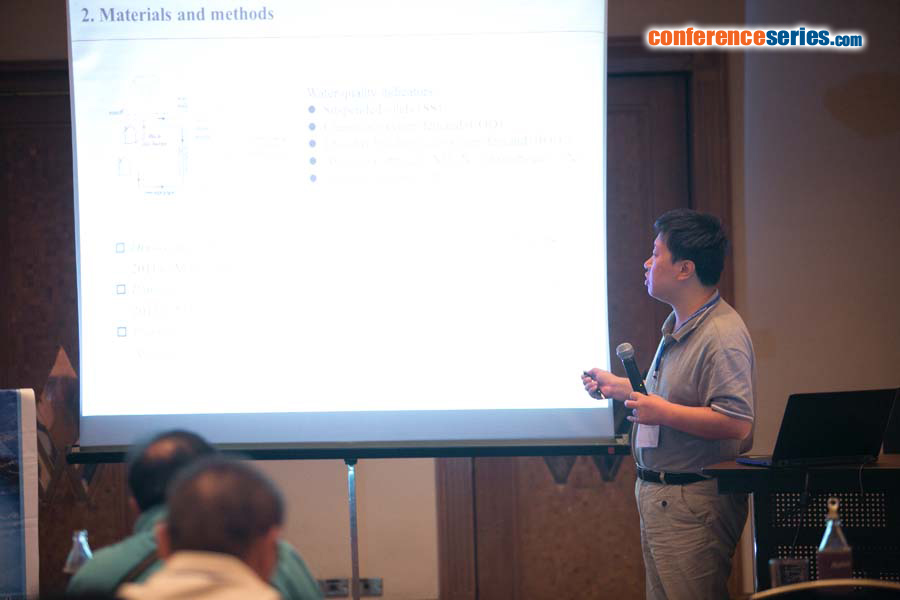Hailong Yin
Tongji Univeresity, China
Title: Characteristics of the overflow pollution of storm drains with inappropriate sewage entry
Biography
Biography: Hailong Yin
Abstract
As compared to the overflow pollution of a combined sewer system, little attention has been paid to the overflow pollution of separate storm drains, especially a storm drainage system with inappropriate sewage entry. With one separate storm drainage system in the Shanghai downtown area as the study site (374 ha), the monitoring activities for inappropriate dry-weather sewage outflow and storm pumping discharge on dry-weather and wet-weather days were conducted, according to which the overflow pollution characteristics of storm drains with inappropriate sewage entry were probed. The following findings were obtained. (1) Whether for storm pumping discharge on dry-weather days or on wet-weather days, the induced overflow concentrations were high, exhibiting 8.2–15.5 times the receiving water use objective on dry-weather days and 7.3–10.4 times the level on wet-weather days for the pollutants considered, including suspended solids (SS), chemical oxygen demand (COD), five-day biological oxygen demand (BOD5), ammonia nitrogen (NH3-N), total nitrogen (TN) and total phosphorus (TP). (2) Till the end of the storm pumping discharge, the overflow concentrations of SS, COD, BOD5 and TP could still be higher than the concentration of inappropriate dryweather sewage outflow, especially for the pumping discharge under dry-weather and medium rain scenarios. This means that the first flush effect was insignificant, and the flush effect occurs consistently throughout the pumping discharge event. (3) Under the wet-weather pumping discharge, the event-mean concentrations of SS, COD and BOD5 of separate storm drains were close to those of combined sewers in the old downtown areas of Shanghai, and the event-mean concentrations of NH3-N from the separate storm drains were significantly higher. Such phenomena are related to serious sewage connections in the storm drains, resulting in dryweather sediment deposition within the storm pipes and the following sediment flush when the storm pumps start, and to a low in-line storm water storage capacity. Therefore, the measures to abate the overflow pollution of the storm drainage system include correcting the inappropriate sewage entries into the storm drains, strengthening the maintenance of the pipe network (e.g., dredging the in-pipe sediments regularly) and employing on-line treatment-type units like continuous water detention tank-enhanced sedimentation tanks and vortex separators.
Speaker Presentations
Speaker PPTs Click Here




